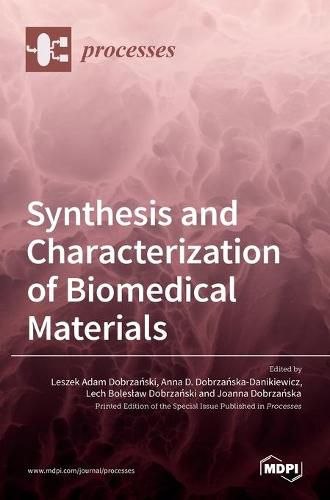Readings Newsletter
Become a Readings Member to make your shopping experience even easier.
Sign in or sign up for free!
You’re not far away from qualifying for FREE standard shipping within Australia
You’ve qualified for FREE standard shipping within Australia
The cart is loading…






This title is printed to order. This book may have been self-published. If so, we cannot guarantee the quality of the content. In the main most books will have gone through the editing process however some may not. We therefore suggest that you be aware of this before ordering this book. If in doubt check either the author or publisher’s details as we are unable to accept any returns unless they are faulty. Please contact us if you have any questions.
This book aims to summarize the latest achievements in the development and manufacturing of modern biomaterials used in modern medicine and dentistry, for example, in cases where, as a result of a traffic or sports accident, aging, resection of organs after oncological surgery, or dangerous inflammation, there is a need to replace lost organs, tissues, and parts of the human body. The essence of biomedical materials is their constant contact with living tissues, organisms, or microorganisms and, therefore, they should meet numerous requirements from various fields, including medicine, biology, chemistry, tissue engineering, and materials science. For this reason, biomaterials must be compatible with the organism, and biocompatibility issues must be addressed before using the product in a clinical setting. The production and synthesis of biomaterials require the use of various technologies and methods to obtain the appropriate material, which is then processed using advanced material processing technologies. Often, however, it is necessary to directly manufacture a specific product with individualized geometric features and properties tailored to the requirements of a particular patient. In such cases, additive manufacturing methods are increasingly used. In this sense, it can be considered that the Biomaterials 4.0 stage has been reached, and detailed information is included in the individual chapters of this book on the achievements in the development and manufacturing of modern biomaterials used in modern regenerative medicine, regenerative dentistry, and tissue engineering.
$9.00 standard shipping within Australia
FREE standard shipping within Australia for orders over $100.00
Express & International shipping calculated at checkout
This title is printed to order. This book may have been self-published. If so, we cannot guarantee the quality of the content. In the main most books will have gone through the editing process however some may not. We therefore suggest that you be aware of this before ordering this book. If in doubt check either the author or publisher’s details as we are unable to accept any returns unless they are faulty. Please contact us if you have any questions.
This book aims to summarize the latest achievements in the development and manufacturing of modern biomaterials used in modern medicine and dentistry, for example, in cases where, as a result of a traffic or sports accident, aging, resection of organs after oncological surgery, or dangerous inflammation, there is a need to replace lost organs, tissues, and parts of the human body. The essence of biomedical materials is their constant contact with living tissues, organisms, or microorganisms and, therefore, they should meet numerous requirements from various fields, including medicine, biology, chemistry, tissue engineering, and materials science. For this reason, biomaterials must be compatible with the organism, and biocompatibility issues must be addressed before using the product in a clinical setting. The production and synthesis of biomaterials require the use of various technologies and methods to obtain the appropriate material, which is then processed using advanced material processing technologies. Often, however, it is necessary to directly manufacture a specific product with individualized geometric features and properties tailored to the requirements of a particular patient. In such cases, additive manufacturing methods are increasingly used. In this sense, it can be considered that the Biomaterials 4.0 stage has been reached, and detailed information is included in the individual chapters of this book on the achievements in the development and manufacturing of modern biomaterials used in modern regenerative medicine, regenerative dentistry, and tissue engineering.